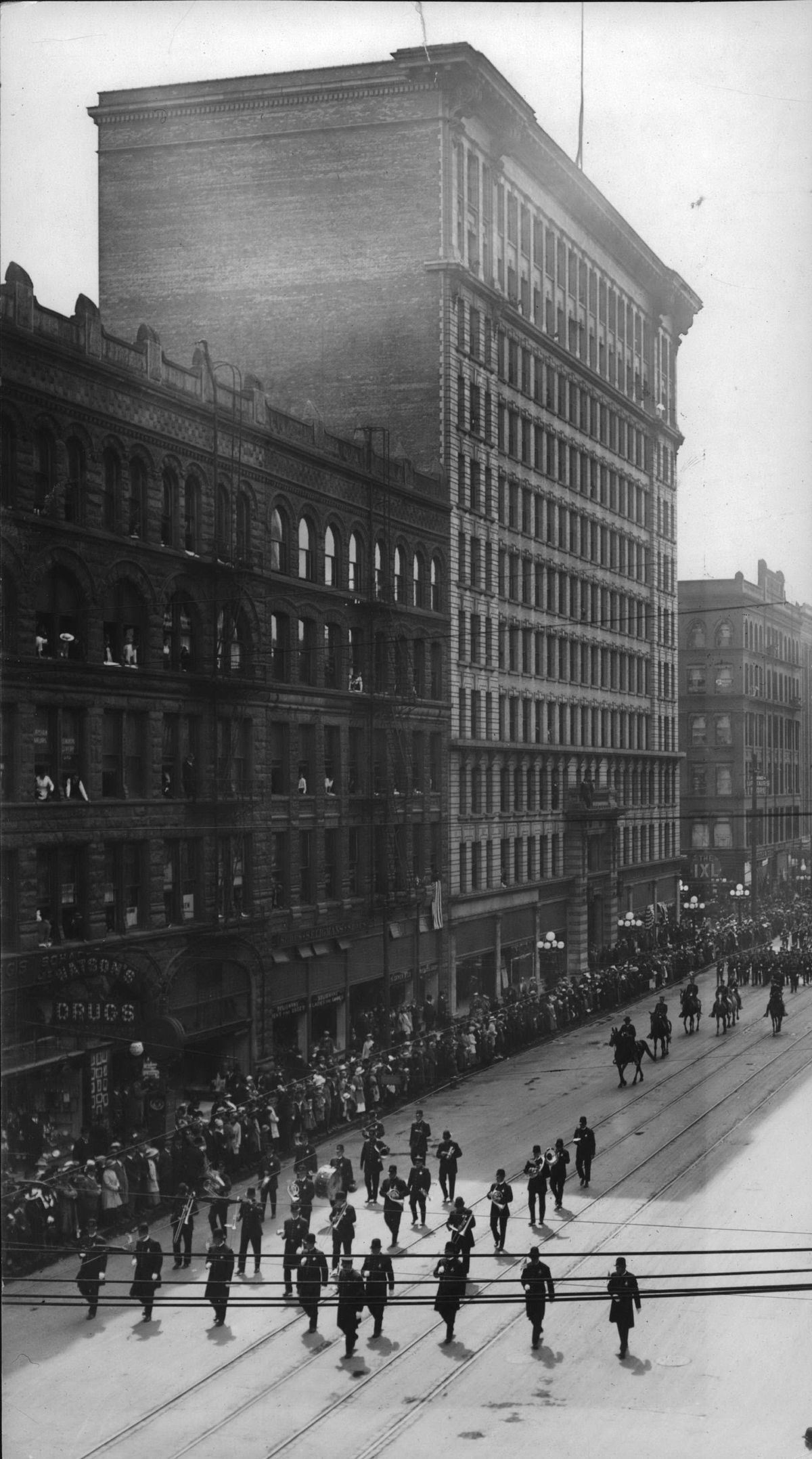Then and Now: Granite and Paulsen buildings

The Granite Block, one of the first buildings completed after the Great Fire of 1889 that destroyed the downtown area, was financed by the Dutch Hypotheek Bank, a mortgage company which had invested deeply in Spokane before the fire. As insurance companies, mainly based in Britain, started paying off the damages from the citywide conflagration, the bank poured money into the rebuilding.
The Granite Block was made of stacked granite blocks, not just facing stones, adding to its impression of mass and solidity.
The Dutch bank had invested approximately $4.5 million into Spokane mortgages after the fire, but sold off some of its properties, in the wake of the Financial Panic of 1893.
Businessman James Monaghan was born in 1839, emigrated from Ireland in 1856 and came to the Washington Territory in 1858. He was a builder, ferry operator, homesteader, storekeeper and postmaster. Monaghan moved to Spokane in 1879. The pioneer businessman was one of 15 men who signed the original Spokane City Charter. He pooled his money with partners in 1898 to buy the Granite Building as an investment.
The Granite sat next to the 11-story August Paulsen building, the city’s tallest building for a short time after it was built in 1908. Paulsen, a Danish immigrant, arrived in 1892. He immediately began dairy farming to raise money to invest in a mine. He scraped together $850 to buy a 25 percent share in the Hercules Mine, and a rich ore body was found in 1901. Other investors who became wealthy overnight included brothers Harry, Eugene and Jerome Day, Charles H. Reeves, Levi W. Hutton, Frank Rothrock and Damien Cardoner. According to company records, the mine was soon producing 6 percent of the nation’s lead and plenty of silver ore.
Paulsen, who had labored for years in his mine, took his newfound riches to Spokane. After finishing his eponymous building, he began planning a 17-story skyscraper with a penthouse apartment for his family. But Paulsen died March 12, 1927, during an asthma attack.
James Monaghan died in 1916. The Paulsen family bought the Granite from Monaghan’s heirs in 1928, tore it down and completed the Paulsen Medical and Dental Building on the site.